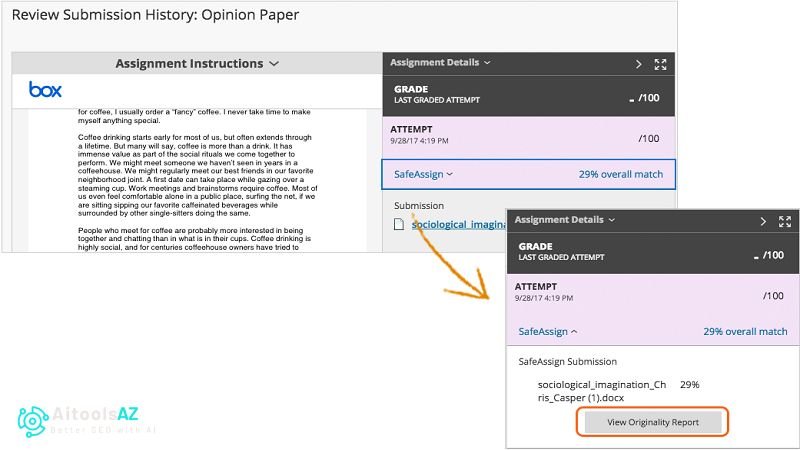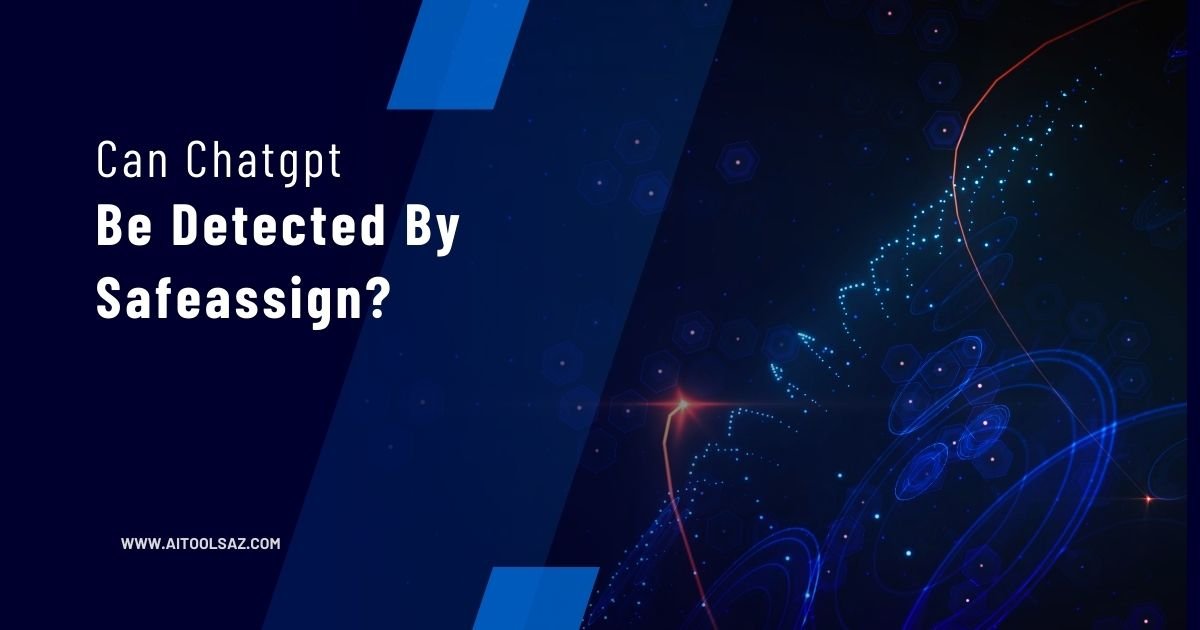As an avid user of advanced language processing models like ChatGPT, I have often wondered if these powerful tools can be detected by plagiarism detection software such as SafeAssign. It is a question that carries significant implications for academic integrity in the digital landscape.
With the rise of AI-powered language models, students and educators alike are grappling with new challenges when it comes to ensuring authenticity in written work.
In this article, we will delve into the capabilities of SafeAssign in detecting advanced language processing models like ChatGPT. We will explore whether this widely used plagiarism detection tool is equipped to identify content generated by AI systems that can mimic human-like writing styles.
Moreover, we will discuss the potential strategies that institutions and individuals can employ to safeguard academic integrity in this age of technological advancements.
Join me on this analytical journey as we uncover the truth behind detecting ChatGPT with SafeAssign and navigate the complexities of maintaining honesty and originality in our digital world.
The Capabilities of SafeAssign in Detecting Advanced Language Processing Models
SafeAssign is a plagiarism detection tool commonly used in academic settings to compare submitted papers against a vast database of sources. However, its primary focus is on identifying plagiarized content rather than detecting the use of advanced language processing models.

Advanced language processing models, such as GPT-3, have made significant advancements in generating realistic chat conversations.
These models can process and understand human-like text input and produce coherent responses that mimic human conversation. They have the ability to generate contextually appropriate answers and engage in meaningful dialogue.
The impact of these advanced language processing models on human communication is profound. They greatly enhance the efficiency and effectiveness of text-based interactions, providing users with instant access to information and personalized assistance.
However, due to their sophistication, it may be challenging for SafeAssign or similar tools to differentiate between content generated by advanced language processing models and original student work.
As a result, there are implications for academic integrity in the digital landscape where students could potentially use these models to produce seemingly authentic assignments without proper attribution.
In conclusion, while SafeAssign plays an essential role in identifying plagiarized content, its current capabilities may not fully detect the use of advanced language processing models like ChatGPT. This raises concerns about maintaining academic integrity in an increasingly technologically-driven world.
Implications for Academic Integrity in the Digital Landscape
As an educator, it’s crucial to address the importance of preventing plagiarism in education. With the emergence of advanced language processing models like ChatGPT, there are potential risks and consequences associated with undetected plagiarized content.
It’s essential to understand and mitigate these risks to ensure academic integrity in the digital landscape.
The Importance of Preventing Plagiarism in Education
To effectively promote academic integrity, it is crucial for you to take proactive measures in preventing plagiarism, as it undermines the learning process and hinders personal growth. Remember, ‘honesty is the best policy.’
In today’s digital landscape, where information is readily accessible with just a few clicks, the role of technology in preventing plagiarism cannot be overstated.
Advanced tools like SafeAssign have become indispensable in educational institutions as they scan submitted papers for any instances of copied content.
These tools not only detect direct matches but also identify paraphrased information, ensuring that students are held accountable for their work.
By integrating technology into the plagiarism prevention process, educators can create an environment that fosters originality and critical thinking skills.
As we delve into the potential risks and consequences of undetected chatgpt content, it becomes evident that staying vigilant against plagiarism is paramount in maintaining academic integrity.
Potential Risks and Consequences of Undetected ChatGPT Content
Uncovering the hidden dangers of undetected content generated by ChatGPT, one must be aware of the potential risks and consequences it poses to academic integrity.
Ethical concerns arise with the use of ChatGPT in online learning environments, as its ability to generate human-like responses can make plagiarism detection more challenging.
This technology allows students to easily access pre-written essays or answers without proper attribution, undermining the principles of originality and knowledge creation.
If undetected, this content not only compromises the assessment process but also devalues the importance of critical thinking and independent work.
Furthermore, unchecked usage of ChatGPT can hinder students’ learning experience, as they miss out on developing essential skills through genuine engagement with course material.
To address these challenges, strategies for ensuring academic integrity in the age of advanced language processing should prioritize proactive monitoring and tailored detection methods that account for evolving AI capabilities without hindering educational progress.
Strategies for Ensuring Academic Integrity in the Age of Advanced Language Processing
In order to ensure academic integrity in the age of advanced language processing, it is crucial to educate students about plagiarism and its consequences.
By providing clear guidelines and examples, students can develop a better understanding of what constitutes plagiarism and how it negatively affects their own learning experience.
Additionally, exploring alternative plagiarism detection methods can help institutions stay ahead of sophisticated AI tools like ChatGPT, ensuring that academic dishonesty is swiftly identified and addressed.
Educating Students about Plagiarism and its Consequences
Understanding plagiarism and its consequences is crucial for academic success. As an educator, my responsibility is to ensure that students are aware of the importance of originality in their work. To effectively educate students about plagiarism, I employ various teaching methods that promote student engagement.
One approach is using real-life examples and case studies to illustrate the negative impact of plagiarism on both personal and professional lives.
Interactive discussions and group activities encourage students to reflect on ethical writing practices and develop a deeper understanding of the subject matter.
By engaging students in these conversations, they become more conscious of the potential consequences associated with plagiarizing.
Moving forward, exploring alternative plagiarism detection methods will allow us to stay one step ahead in maintaining academic integrity without compromising student learning experiences.
Exploring Alternative Plagiarism Detection Methods
Discover dynamic and diverse methods to detect plagiarism, ensuring the maintenance of academic integrity while enhancing student learning experiences. In today’s digital age, exploring AI-powered plagiarism detection systems has become crucial.
These advanced tools leverage artificial intelligence algorithms to analyze text and identify potential instances of plagiarism.
Unlike traditional methods that rely on manual inspection or keyword matching, AI-powered systems can detect subtle similarities and paraphrasing techniques used by students to deceive plagiarism checkers.
Despite the promising potential of AI-powered detection methods, they also have their limitations. One challenge is the ever-evolving nature of plagiarism tactics employed by students.
As new methods emerge, these systems must continuously adapt and update their algorithms to stay effective. Additionally, there is a risk of false positives or negatives when using AI-powered systems, as they may not always accurately identify instances of unintentional plagiarism or fail to recognize sophisticated techniques employed by skilled plagiarists.
As educators continue exploring alternative plagiarism detection methods, it is essential to strike a balance between maintaining academic integrity and providing an enriching learning experience for students.
By embracing technological advancements like AI-powered tools while addressing their limitations, educational institutions can ensure fair assessment practices and foster a culture of originality among students.
Conclusion
In conclusion, SafeAssign’s current capabilities may not be sufficient to detect the use of advanced language processing models like ChatGPT. This poses a significant challenge for ensuring academic integrity in the digital landscape.
As these models continue to evolve and become more sophisticated, it becomes imperative for educational institutions to develop new strategies and tools to combat plagiarism effectively.
For example, a hypothetical case study could involve a student using ChatGPT to generate an original-sounding essay that goes undetected by SafeAssign due to its inability to recognize the model’s output as plagiarized content.

